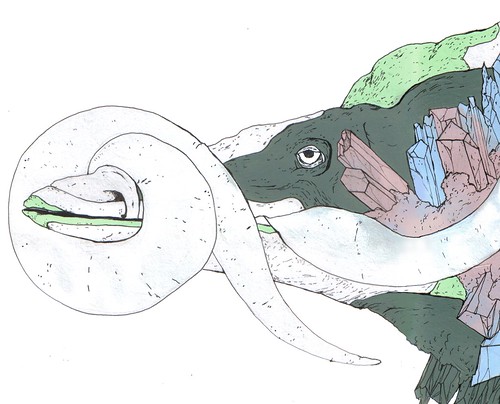Saturday, 24 October 2009
Switching and some history
Intrigue: The work of Field and TRAUM
Poor visibility; weather again unsettled today. Surreal rocks and riven lowlands, valleys fog-shrouded. Frightening depths, and emptiness. Rarity of air is noticeable. What are you looking for in this hostile stretch?
www.field.io/projects/interim-camp
I found both FIELD and DIFFERANCE very inspirational. I was very glad to be associated with them.
Graphics programming and animations imitating them before they existed
Yantra - James Whitney (1957)
L-SYSTEMS
DND
Thursday, 22 October 2009
Robot dialog
Please stack up the yellow and purple blocks, and either a blue cube or a pyramid.
Ok.
Which cube is sitting on the table?
The large blue one that supports the green pyramid.
Put a small cube onto the blue cube that supports a pyramid.
Ok.
Put the littlest pyramid on top of it.
Ok.
How many things are on top of the blue cubes?
I’m not sure what you mean by ‘on top of’ in the phrase ‘on top of the blue cubes.’
Do you mean:
1 - Directly on the surface?
2 - Anywhere on top of?
2.
Three of them.
Had you touched any pyramid before you put the red one the little cube?
Yes, the red one.
When did you pick it up?
While I was stacking up the purple cube, a large yellow block, and a large blue cube.
Why?
To get rid of it.
Why did you do that?
To clear off the purple cube.
Why did you clear off that cube?
To put it on the large blue cube.
Why did you do that?
To stack up the purple cube, a yellow block and a large blue cube.
Why did you do that?
Because you asked me to.
Very well. Now please stack both the blue cubes and the smallest pyramid.
Ok.

Thursday, 15 October 2009
WEEK 1
1) Demonstration early digital music technology
3) Johnny Harcastel's video to his 1981 composition 'King Tut'.
Friday, 9 October 2009
ELECTIVE POST FROM "LE POMP"
(Link to Bell Laboratories)

This topic is going to be a very interesting part of my course. Digital information is transfered, stored and understood through the interpretation of two states of an electron: positive and non-positive. Read as 1 and 0 respectively. Thats It!.
Everything in the computer, on the internet, programs, games, digital cameras, mobile phones, other small processors e.g; found in microwaves, washing machines and DVD players. All the information; images and sounds in your lap top/computer/ipod/MP3/any digital device, is just the translation of one of these two states in a sequence (or instruction?) that is interpreted and translated into understandable or meaningful information.
As it stands, I already find it flabbergasting to say the least that the elementary, ordinary matter (such as electrons) that our world is built from can and does exhibit such extraordinary behavior in living plants and beasts.
Down to the functioning of all the bodily systems that make us alive, from the mechanical and chemical digestion of food to the complexity of the nervous system and the consciousness of the brain, charge movement/shift is responsible.
Generally, what we do and what occurs naturally with electrons in the environment is astounding. Of course the creation of the digital environment that we are vaguely familiar with is not apart from this. I needn't elaborate when I remind myself (and yourself) that all things have a bad side as we can expand networks, share data, create and edit music, art and film within digital environments but it is a predominantly tremendous boon to our understanding of the world and the development of the modern culture and creativity that emerges in response to it.

I look forward to what I will be doing later on this year. Another reason why seeing the work of Field on the opening of the exhibition was so interesting. Ill be looking up some of what other people have been up to once October begins.
(Extract from LE POMP: Digital Environments)

